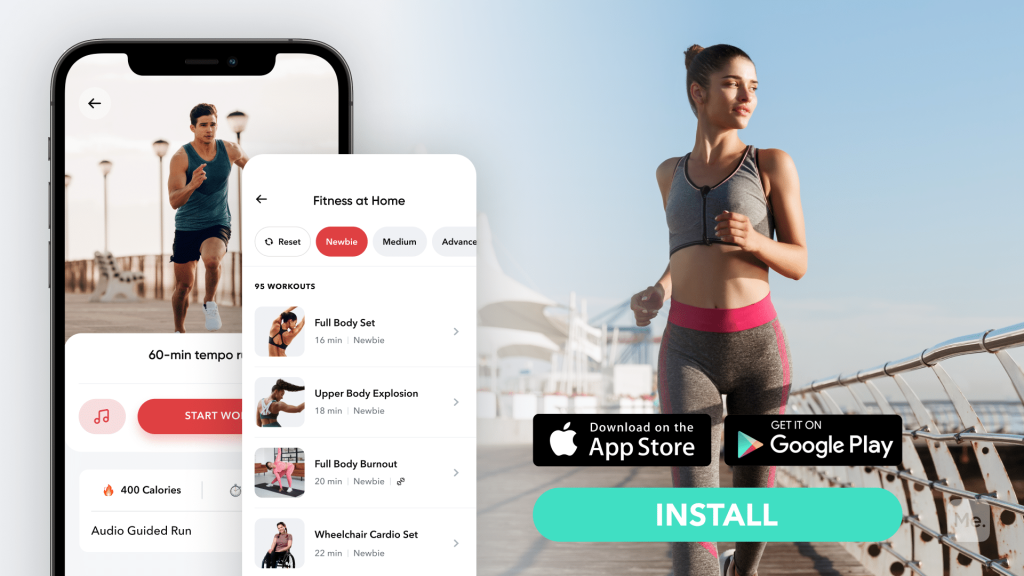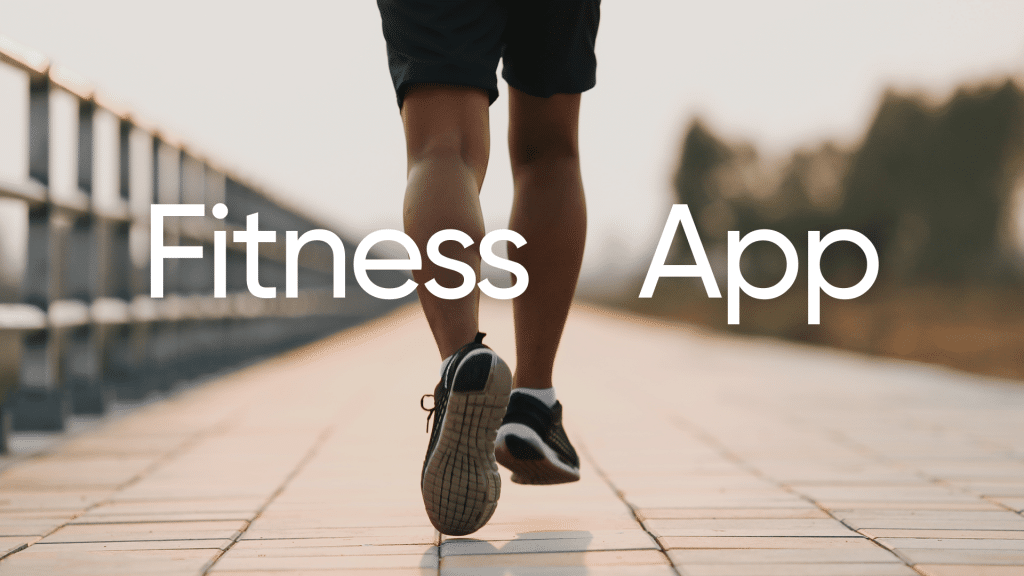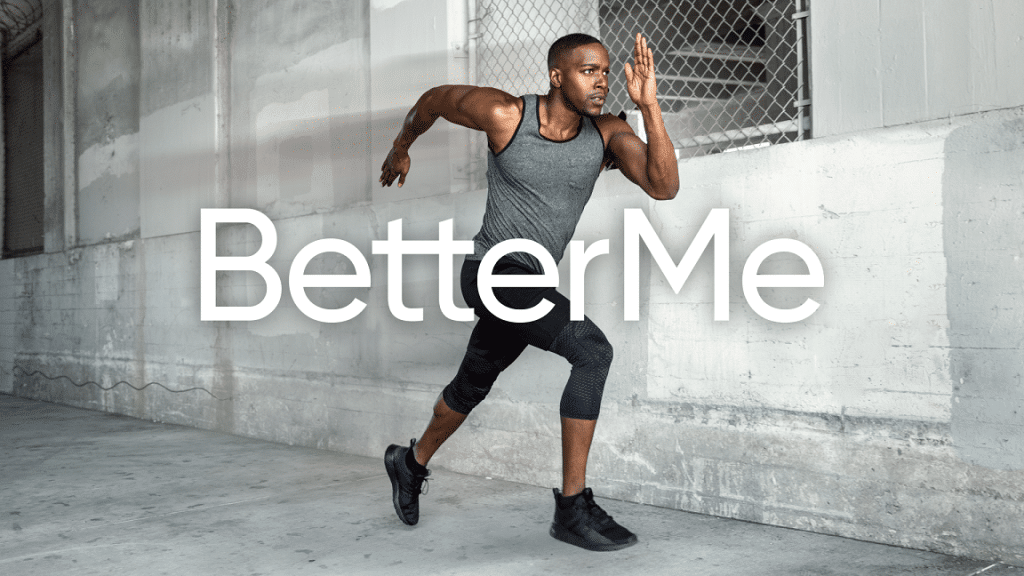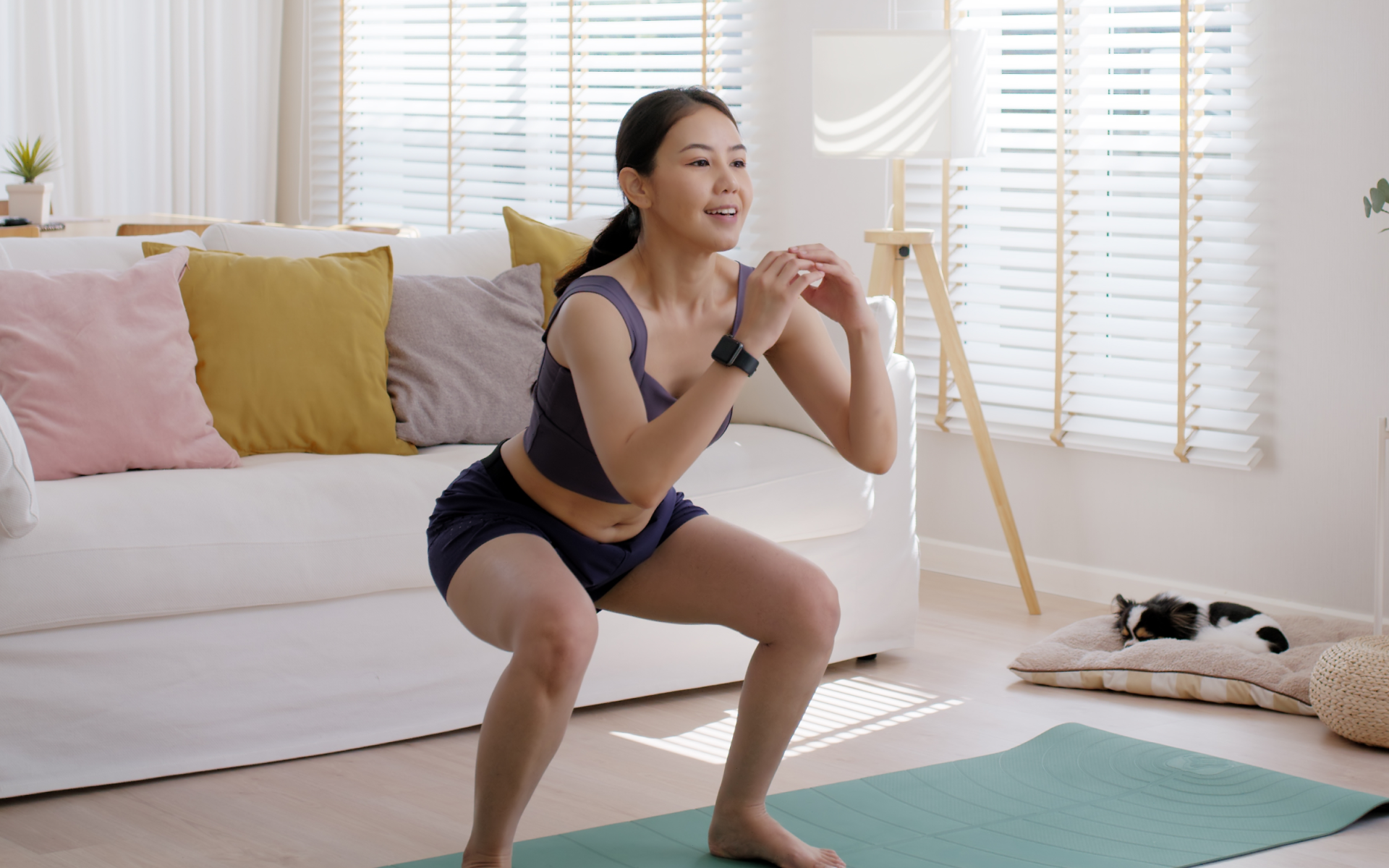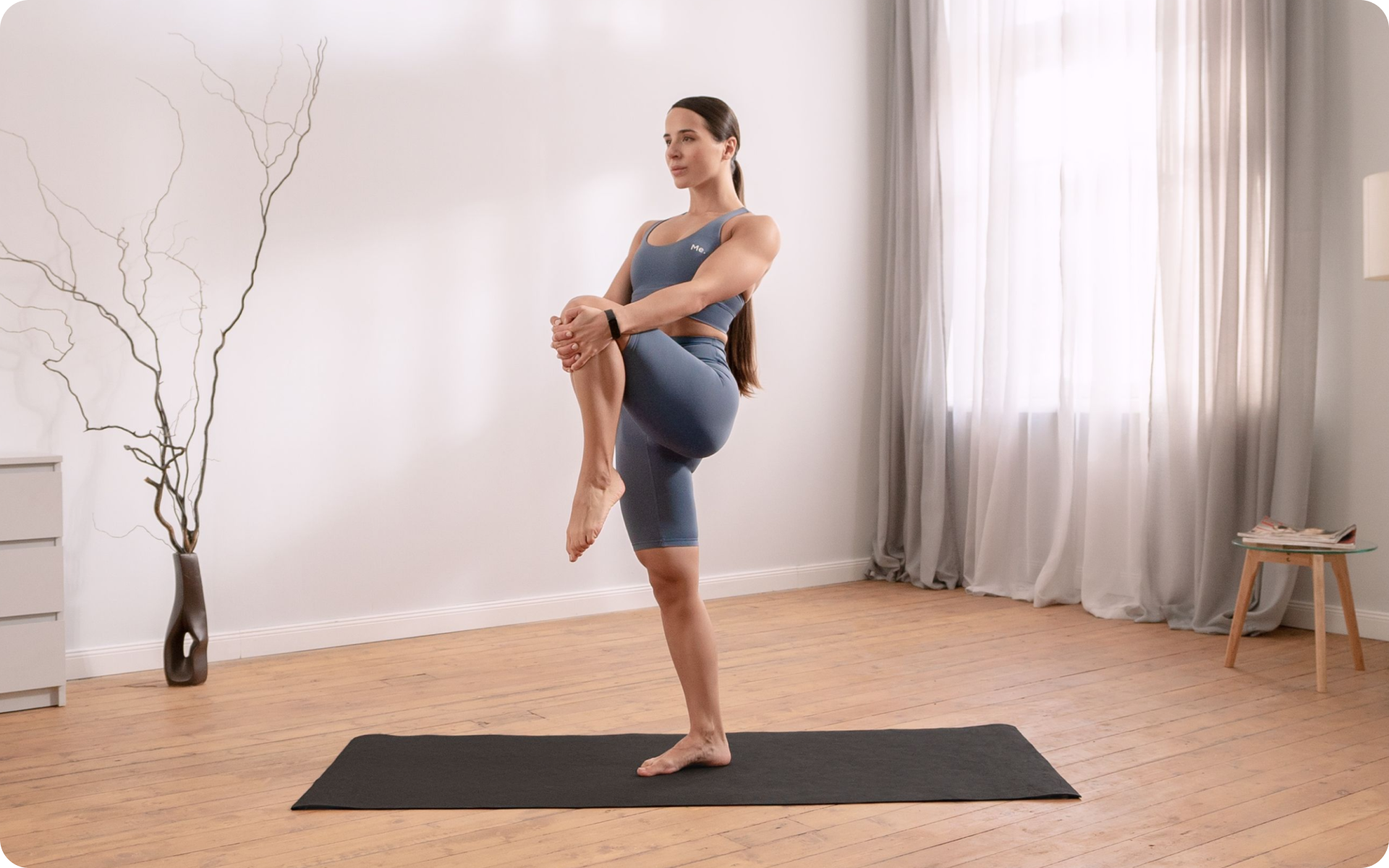Fitness is a goal that many people want to achieve, but few actually do. The reason for this is the enormous time commitment and effort it takes to get in shape. And while some people are naturally more inclined towards fitness than others, everyone can benefit from running. Running not only gives you an aerobic workout but also strengthens your leg muscles and improves your cardiovascular health by increasing your lung capacity. But if you’re new to running or have never run before at all, there are ways to make the process easier on yourself, so you don’t end up giving up before getting to one mile. This article will give tips on running a mile without stopping, as well as general advice about how to gradually improve your speed.
Get your personalized
meal plan!
What To Do While Running The Mile?
Here are some tips to use while running to improve your stamina and speed:
Start Slow
If this is your first time running a mile, you should start slowly. This will help prevent injury and allow your body to slowly acclimate to the activity. Always begin with a warm-up, then do some cool-down exercises after running (7). Don’t expect yourself to run a mile like an experienced runner right away; it takes time for your muscles, ligaments, tendons, and bones to adjust too!
Have Intrinsic Motivation
Many people give up on their fitness goals because they simply don’t care enough or find running interesting. To help you avoid this, identify your intrinsic reasons for wanting to run a mile.
These can be anything from wanting to see how much you can improve to wanting to look better in your new dress – whatever you personally find rewarding! If it’s difficult for you to come up with an intrinsic reason on your own, ask yourself what obstacles are keeping you from achieving your goal? Or why going the extra mile is important to you; that might spark some ideas.
Read More: How Many Miles Should I Run A Day? Tips For Developing And Sustaining A Running Habit
Set A Target Time
It may sound silly but setting a target time helps achieve your goal of running a mile without stopping. It gives you something concrete to work towards and keeps you motivated even when you’re feeling exhausted or want to quit halfway through. You can choose whatever time sounds challenging enough (but not impossible) for you; just make sure that it’s realistic.
Pace Yourself
To avoid feeling winded or having to stop during your first mile, you need to pace yourself. In other words, each of your strides must be about the same distance as the one before it. Keeping a constant stride length is not only easier on your body but also more efficient.
Focus On Breathing Rhythmically
Most people focus so hard on running a whole mile without stopping that they forgo breathing properly. This is a mistake because your muscles actually need oxygen to keep going at a steady pace throughout the entire run (10). As soon as you start breathing rhythmically, in and out through the nose, you will notice an immediate difference in how energized you feel and how much further you can go.
Use Good Form
Having good running form means that you are in control of your body and, just as importantly, NOT controlled by it.
When you run with proper form, your muscles work together to create a smooth, effortless stride that can be maintained over long distances without fatigue.
Running with the proper form decreases the chance of injury and muscle soreness after a workout has been completed. This will allow for an increase in training volume, which will increase your performance than if you had poor running form (13).
Bad running form is any deviation from correct posture, movement, or mechanics of the lower extremities while running, those being:
- Overstriding (distance between each step taken too far apart)
- Heel striking (landing with your heel)
- Decreased arm movement/swing
- Allowing the knee to come straight over the foot rather than driving forward from underneath it
If you wish to free yourself from all the extra pounds that have been weighting you down for way too long, start using the BetterMe app and overhaul your entire life!
How To Fix Overstriding?
Over-striders are runners who take excessively long strides. This can be due to poor running form or poor choice of running location. Because over striding increases impacts on joints and muscles, it has been hypothesized to increase the risk for injury (1).
- Create Enough Space
If you use a treadmill, make sure there is plenty of room in front of you before exercising. Incorrect placement of the machine next to large pieces of equipment could cause the user to feel crowded, which may encourage overstriding.
- Use Quick, Light Strikes
You should focus on quick, lightfoot strikes rather than long strides. This will help you learn to use your glutes and hips more efficiently while running. You can also work on shortening your stride length by counting “one-Mississippi” every time your right foot touches the ground while running. Try a few runs like this and make it a habit of using that breathing technique when you run.
- Increase Your Cadence
To decrease over striding, research has shown that runners who worked on increasing their cadence (the number of steps they take per minute) were able to dramatically reduce the amount of over striding (6). Try this for yourself! Increase your cadence by 10% and see if doing so reduces the amount of overstriding you do.
Adopt A More Efficient Stride
A more efficient running stride will help prevent over-striding, decrease impact forces on your body while running, and also reduce the amount of time wasted on traveling with each step that is taken (6). This means less fatigue throughout your workout or race, allowing you to maintain an effort of racing harder for a longer duration before fatigue sets in.
Read More: Is Running 10 Miles A Week Good For You? Benefits & Risks Explained
How To Fix Heel Striking?
Heel striking puts excessive stress on the muscles, tendons, and joints, which can lead to pain not only during running but also barefoot after training.
- Use A Mid-Foot Strike
If possible it’s recommended to switch over to using a mid-foot strike when heel striking occurs (landing just under the ball of the foot). It may take some practice, but heel striking should be limited if at all possible.
It’s important to note that transitioning to a mid-foot strike may cause some discomfort in the legs (and arches of feet), and therefore should not be forced if it causes pain or discomfort.
For one, you can strengthen your glutes and hamstrings, so they are more powerful when they contract. Moving from a heel strike to a mid/forefoot strike is likely going to feel very awkward at first but shouldn’t put you in too much discomfort.
- Reduce Your Stride Length
Another factor for avoiding excessive heel striking is stride length. When we heel strike, we tend to take longer strides with less knee lift. This means overstriding, which increases impact forces on the joints and muscles that can lead to injury. So keep your stride short and stay away from the longer faster stride that you would have if your heel struck (8).
How To Fix Decreasing Arm Swing?
If running with no arm swing starts to feel very awkward and uncomfortable, slowly decrease the speed of arm movement until it feels okay again. This should be done over several weeks, not immediately.
You should run relaxed, loose arms with hands lightly clenched in a fist. When your arms move up towards your chest, do so by contracting (shortening) the triceps (back part of the upper arm), and when they return to the down position, relax them.
Your goal is not to swing them back and forth but rather keep them low and close to your body while pumping forward at about 90-degree angles, finishing at your waist/hips. This will reduce the strain placed on your neck when keeping them still and keep the added momentum from over swinging (4).
Some people think that pumping the arms back and forth will help propel you forward by pushing against the ground under each stride (12). Take a look at distance runners who sprint or pick up speed, they don’t pump their arms back and forth but instead focus on rhythmically lifting their legs and switching to shorter, faster arm strides to increase leg turnover.
It’s important to note that if you feel pain in your hips, shoulders, neck, or elsewhere after running, it’s likely due to poor running mechanics such as overstriding, poor arm movement, etc., not by having too little or too much arm movement.
Many of us run with relaxed hanging arms, but this is typical because we weren’t taught or trained how to run with correct arm action (many coaches/runners still believe in the “elbows at 90-degree angle” myth).
So while you can work on decreasing your arm swing, don’t hold back from ensuring that you have good running mechanics. If you find yourself constantly tensing up when running, then light jogging and drills should help improve form before attempting faster running.
Yanking yourself back in shape has never been so easy with our game-changing fitness app! Start transforming your life with BetterMe!
What To Do While Training To Run The Mile?
No matter how many times you decide to run one mile, there is always room for improvement!
Here are some tips to help you gradually get better at running:
Have A Training Plan
The best way to improve at anything is by breaking it down into smaller chunks so that it feels more manageable. For example, if you want to run six miles in one go, start with 6 x 1 mile workouts instead and then slowly work your way up over time. This will also encourage consistency and dependability because each mile can feel like just another step towards achieving your full goal.
Always Warm-Up
Even if you’re only planning on running for a little bit, it’s super important to warm up beforehand (2). Stretching is the safest way to go, but you can also opt for taking a quick walk before you begin. It will protect your muscles from injury and prevent cramps too!
Alternate Walking And Running Intervals
Instead of always running the full mile at the same pace, try alternating between walking and running intervals. This will allow your body to gradually adjust to new challenges each time while preventing a minute of exercise from becoming unbearable. Walk whenever you need to catch your breath or rest – don’t push yourself too hard right away!
Incorporate Strength Training And Cross-Training
Building strength by using free weights or resistance bands is a great way to protect your body while running. Also, cross-training with activities like cycling and swimming can help increase your cardio capabilities while also adding variety to your workout plan.
Have Rest Days
You need rest days to avoid injury and burnout! Give yourself at least a day off each week so that you have time to recover and recharge for the next session. This will ensure that you get better results from each training session because it’s more likely that you’ll push yourself hard enough on days when you feel fully energized (11).
Build Up To Running A Mile
If you don’t have the stamina to run a full mile, don’t force yourself to do it all at once. Instead of running for an entire hour straight, split the time into 30-minute sessions and then gradually increase your pace each time. Once you can get through a whole session without stopping too many times, you can start working on going faster.
Remember To Cool Down
As soon as you’re done running, take a few minutes to walk around and stretch so that your muscles don’t lock up (5). This is especially important if your body feels super sore from pushing itself too hard during workouts. Remember not to push yourself too far to avoid injuries.
Fuel Your Body With The Right Foods
A great way to make sure that you recover from your runs is by refueling yourself with the right kinds of foods (9). Foods rich in protein and carbohydrates are necessary for helping your body heal itself, so make sure to eat them as part of your diet.
If you’re wondering how to fuel yourself while running, the answer is carbs! Carbs are an excellent source of energy, and they will help you get through your jog without exhausting yourself too quickly (3). It’s advisable to have some simple carbs an hour before you start running and to replenish your glycogen stores during the run with foods like bananas or energy gels.
Find A Running Group
Running alone can be lonely, so why not find some friends who are interested in running with you? Having an encouraging group is a great way to keep yourself motivated, especially since each person will have different goals they want to achieve.
Finding a running partner is also an excellent idea because it keeps you accountable. You’re less likely to skip out on your workout if someone else is counting on you. Plus, working out as part of a team ensures that everyone does their best (14).
The Bottom Line
Running a mile doesn’t have to be hard. If you follow these easy tips, you can get the most out of your running sessions without injuring yourself or burning out too soon.
DISCLAIMER:
This article is intended for general informational purposes only and does not address individual circumstances. It is not a substitute for professional advice or help and should not be relied on to make decisions of any kind. Any action you take upon the information presented in this article is strictly at your own risk and responsibility!
SOURCES:
- An Evidence-Based Videotaped Running Biomechanics Analysis (2016, ncbi.nlm.nih.gov)
- A systematic review of the effects of upper body warm-up on performance and injury (2015, bjsm.bmj.com)
- Carbohydrates as a source of energy (2009, academic.oup.com)
- Control and function of arm swing in human walking and running (2009, journals.biologists.com)
- Do We Need a Cool-Down After Exercise? A Narrative Review of the Psychophysiological Effects and the Effects on Performance, Injuries and the Long-Term Adaptive Response – Sports Medicine (2018, link.springer.com)
- Effect of Increasing Running Cadence on Peak Impact Force in an Outdoor Environment (2021, ijspt.scholasticahq.com)
- How To Stretch Before a Run—Properly (2021, yalemedicine.org)
- Influence of Stride Frequency and Length on Running Mechanics (2014, ncbi.nlm.nih.gov)
- International Society of Sports Nutrition Position Stand: nutritional considerations for single-stage ultra-marathon training and racing – Journal of the International Society of Sports Nutrition (2019, jissn.biomedcentral.com)
- Oxygen Consumption and Usage During Physical Exercise: The Balance Between Oxidative Stress and ROS-Dependent Adaptive Signaling (2013, ncbi.nlm.nih.gov)
- Recovery after exercise: what is the current state of play? (2019, sciencedirect.com)
- Role of Arm Mechanics During Sprint Running: A Review of the Literature and Practical Applications (2018, journals.lww.com)
- Role of Arm Mechanics During Sprint Running: A Review of the Literature and Practical Applications (2017, journals.lww.com)
- Running together is better than running alone: a qualitative study of a self-organised distance running group in China (2020, tandfonline.com)



